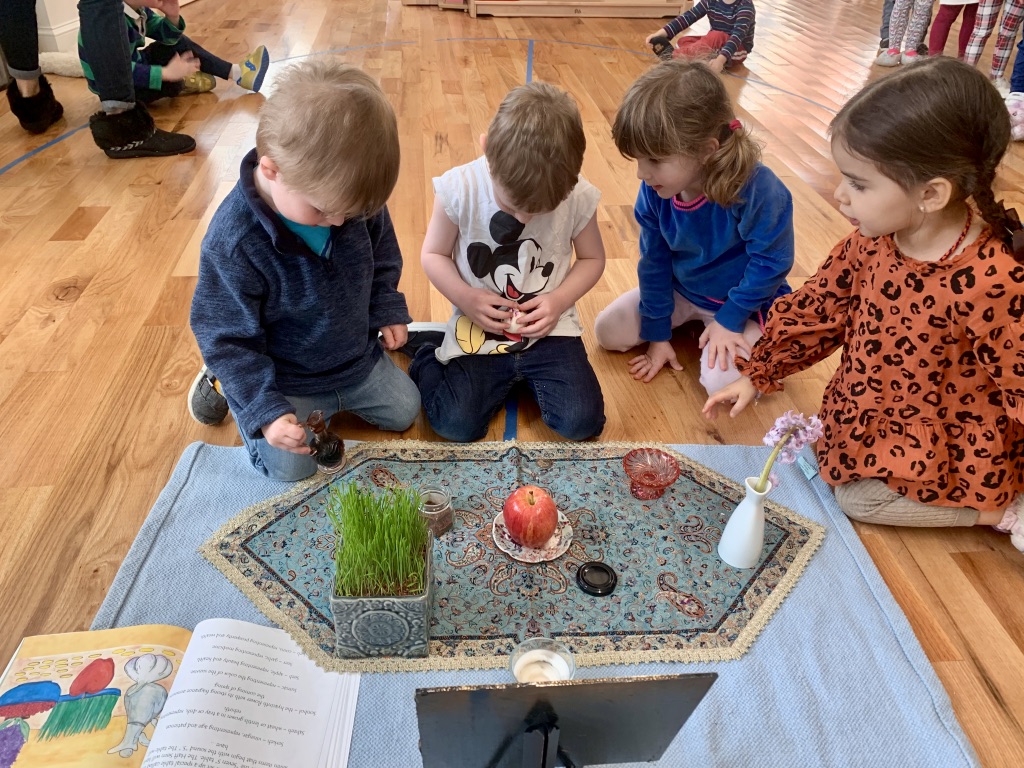The cultural component of the Montessori curriculum is one of the most unique aspects of a Montessori classroom. It was developed by Dr. Montessori during the tumultuous years leading up to and following World War II, with the intent to educate for world Peace. Maria Montessori once famously wrote, “Establishing lasting Peace is the work of education- all politics can do is keep us out of war!”
In the cultural curriculum, children begin by learning that all of humanity lives on planet earth. Through visual and tactile exploration of the Montessori globes, the children see and feel the differences between land and water. Later, children learn about the continents that make up our earth, and soon after, the individual countries that make up each continent. They learn about the country, state, and city that they live in, and often have opportunities to connect with and explore the diversity of their own immediate community.
Over time, they begin to learn about the various cultures, languages, foods, and people that make up countries and cities. They learn that culture is often affected by climate, and that countries and regions with similar climates or histories may also share similarities in their cultures. Of course, in our ever-changing and diversifying world, children also learn that every community, even their own classroom, is made up of a blend of cultures and backgrounds. They also discover that, despite differences in food, language, types of dress, or place of origin, we all share many profound similarities.
As the famous children’s author, Mem Fox writes, “We all hurt the same, and we all love the same.” Philly Montessori believes that all people should be treated with kindness, acceptance, and generosity of spirit—regardless of a person’s race, color, ethnicity, or gender.
Learn more about the Montessori Cultural Curriculum:
Back to Our ClassroomComments are closed.



Recent Comments